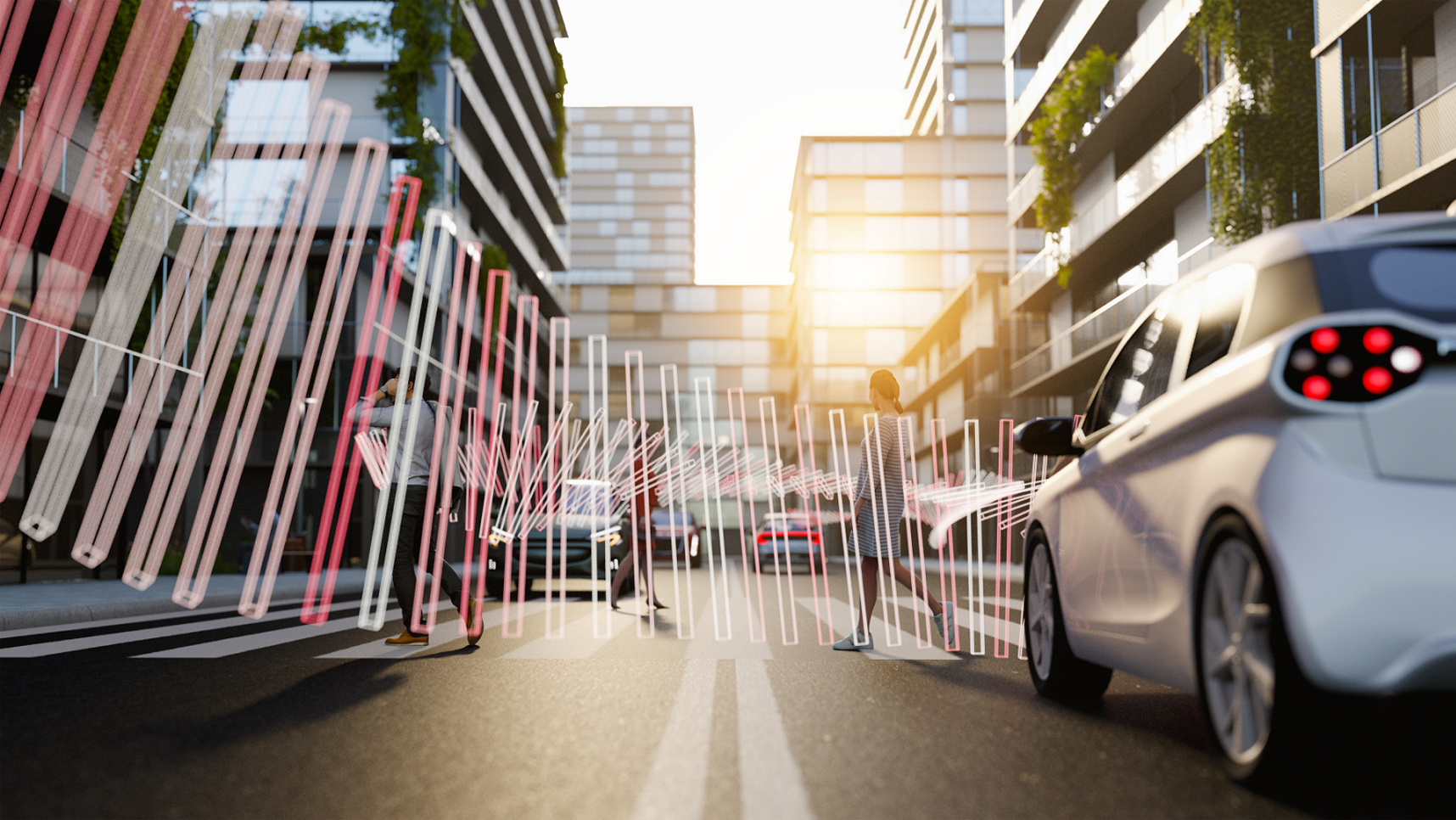At times, we truly appreciate the sounds produced by our vehicles—like the robust rumble of a large V8 engine or the satisfying whirr of a turbocharger. But let's be honest, not all car noises spark the same excitement. Active Noise Cancellation (ANC) tackles those less pleasant sounds, such as HVAC, wind, tire hum, and road noise, by generating sound frequencies that essentially "mute" them.
Your car of the future: an oasis of calm
In the cities of tomorrow, vehicles glide silently and emit zero emissions. Their interiors become havens of space, comfort, and silence. Seamlessly integrated tech features transform these spaces into offices for diligent professionals, lounges for relaxation seekers, and peaceful retreats from the bustling world outside. In essence, the car of the future offers a first-class driving experience on four wheels. Guided by this vision, car manufacturers, system developers, and sound experts tirelessly explore new technologies to create an immersive, personalized, and enjoyable in-cabin sound experience. This goal involves, among other initiatives, minimizing background noise in the cabin. And this is where Active Noise Cancellation (ANC) comes into play.
So, what is ANC exactly?
The 'C' in ANC stands for 'cancellation,' but 'control' is a more fitting term. ANC isn't about eradicating sound; it's about managing it to be less intrusive. ANC is an onboard system designed to reduce unwanted ambient noises. It usually relies on microphones to monitor sound levels and frequencies. This data is then processed to create a unique signal with an inverted phase. Subsequently, the car's speakers emit this specific sound, which interacts with existing sounds, effectively reducing or even entirely canceling them out. Simply put, it results in either inaudible sound or sound that's less noticeable to human ears.
ANC: not as easy as it sounds
This may all sound simple, but it's not. An ANC solution for vehicle interiors differs significantly from the one used in the earphones or headphones you use daily, which operate in a 'defined' hearing scenario. An ANC system within a vehicle interior is much like finely tuning an orchestra to perfection—harmonizing the array of sounds as a vehicle transitions from highways to bustling cities.
Inside the cabin, the listening situation is far more intricate due to various elements influencing sound perception: the cabin's size and shape, its acoustic properties, passenger seating locations, their movements, upholstery, and yes, even their attire! This complexity makes developing a system accurate and quick enough to manage these factors' intricate interplay extremely challenging.
At its core, an ANC system involves two sensors: one for measuring the noise field and another for gauging the reduced noise. Typically, it encompasses an input sensor, an error sensor, an adaptive filter, and a canceling source. However, to effectively address all the variables mentioned above, a multitude of sensors and microphones will be necessary to ensure seamless operation.
Noise, latency and frequency range
In this complex environment, key challenges to tackle include the nature of the noise, latency, and frequency range, particularly for signals with higher frequencies. This is why, at Kendrion, we focus on frequencies up to 300 to 500 Hz. Effectively reducing these frequencies is intricate due to signal wavelengths. Additionally, the concern extends to static or sporadic signals—predicting and promptly responding to them. Mainly, the issue centers on noises like wind and tire noise, which are both irregular and random.
AI and related technologies can significantly assist here. Algorithms alone struggle to rapidly detect and respond to these signals without latency. Achieving real-time responsiveness is challenging; even a millisecond deviation can lead to amplifying the noise. AI continuously analyzes ambient environmental sound components and automatically selects the most effective noise-canceling mode.
Developers face a formidable challenge in creating an efficiently versatile ANC solution that considers all these aspects while conserving energy and remaining cost-effective. Moreover, it's essential to retain the driver's awareness of crucial external sounds, such as sirens and car horns, as well as cues like an unsecured undercarriage or the sound of dragging debris.
Bubbles and zones
So, what solutions are already available? There are hardware/software solutions using an array of microphones and sensors. However, these are costly and due to latency issues, only function within a limited frequency range.
New software-only solutions help reduce sound at the destination, like creating a bubble or zone for passengers. This technology is integrated into seats, utilizing existing audio speakers to establish a silent zone around the passenger's head. The alternative approach addresses sound at its source. In this case, the solution is integrated into products like the HVAC system.
How can Kendrion help?
Minimizing unwanted noise directly at its source is challenging. One option is transmitting a signal as vibrations onto surfaces like plastic panels or the windshield, directly where the noise is perceived. This is where our smart actuators play a crucial role. In tandem with customized algorithms, they generate an "anti-signal" through phase-shifting, effectively reducing vibrations and noise. Increasingly, we're moving towards a software-only approach with our sound products. We're proud to say Kendrion is a pioneer in interior and exterior sound solutions for electric vehicles. In fact, we can build on a decade of software and acoustics expertise that's second to none.
Currently, we're conducting a feasibility study on a software-only, AI-driven ANC system with frequency ranges < 500Hz. We're doing this with external specialists TOPAS Industriemathematik, experts in aerosol measurement, particle technology, algorithms, and DOCK ONE, a digital and innovation laboratory for Industry 4.0. We're also actively exploring ANC possibilities with a major car manufacturer. ANC is a complicated field, but we have excellent sound expertise and very knowledgeable partners in the right field.
We're excited about this groundbreaking technology and are fully committed to crafting an efficient, flexible solution. While it poses a significant challenge, our engineers approach it with enthusiasm and determination!
Find out more about us and our Vehicle Sound Systems!










